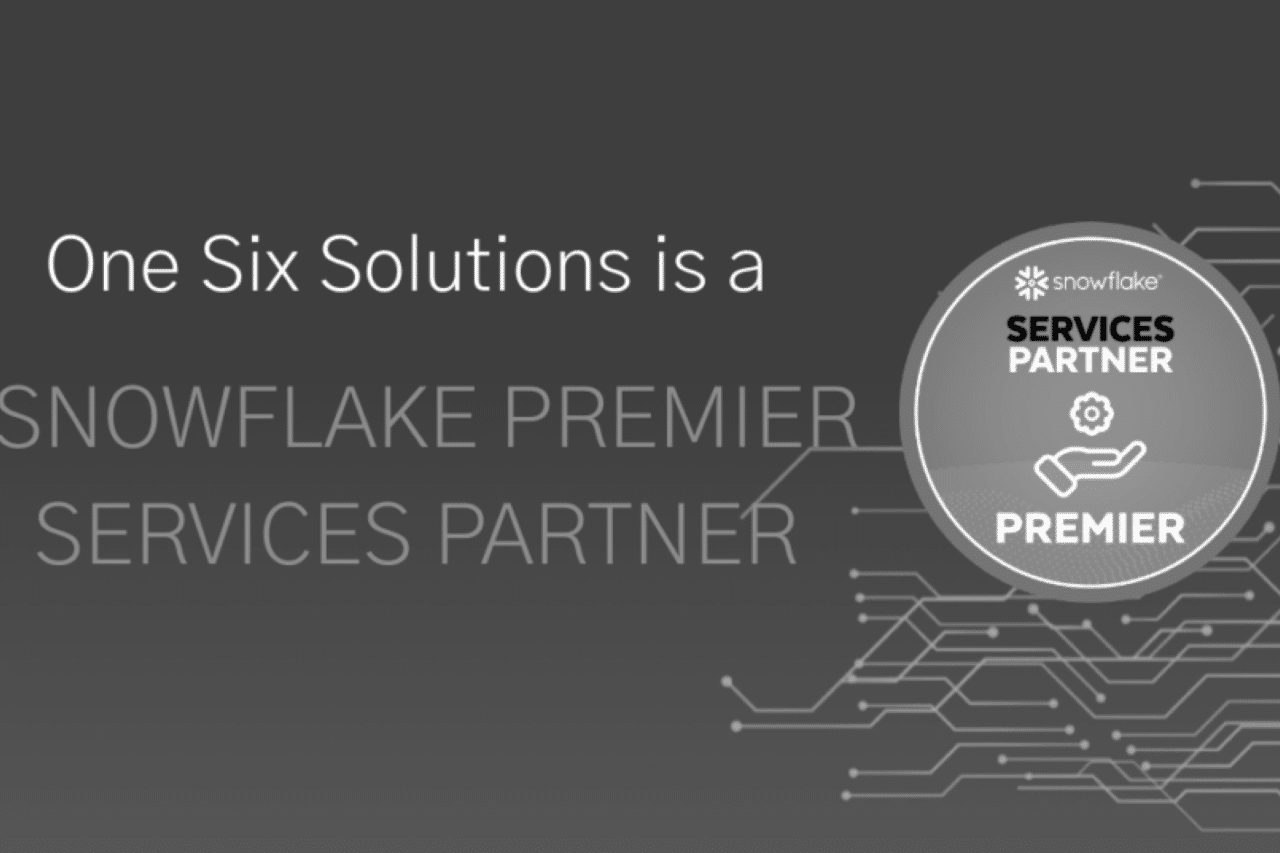One Six Solutions Reaches Snowflake Premier Partner Status
Published
January 20, 2022

One Six Solutions is excited to announce our latest achievement: reaching Snowflake Premier Services Partner status! This achievement recognizes One Six Solutions and Snowflake’s strong partnership, and the success we have delivered for our customers on their Snowflake projects.
As experienced Snowflake Premier Services Partners, we have helped an array of companies across size and industry, achieve better business outcomes with Snowflake. Whether you are just getting started with Snowflake, looking to migrate from a legacy data platform, or need help implementing Snowflake as part of your modern data stack, One Six Solutions’ Snowflake consulting services will guide you through every phase of the project.
Snowflake delivers the Data Cloud — a global network where thousands of organizations mobilize data with near-unlimited scale, concurrency, and performance. Inside the Data Cloud, organizations unite their siloed data, easily discover and securely share governed data, and execute diverse analytic workloads. Wherever data or users live, Snowflake delivers a single and seamless experience across multiple public clouds. Snowflake’s platform is the engine that powers and provides access to the Data Cloud, creating a solution for data warehousing, data lakes, data engineering, data science, data application development, and data sharing. Join Snowflake customers, partners, and data providers already taking their businesses to new frontiers in the Data Cloud.
If you would like to learn how One Six Solutions can help with your Snowflake or Data Warehouse project, schedule a FREE Consultation with us today.



